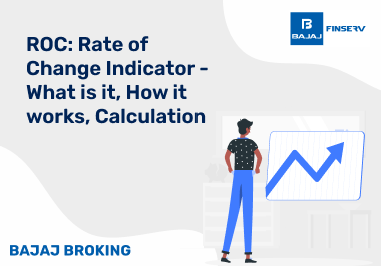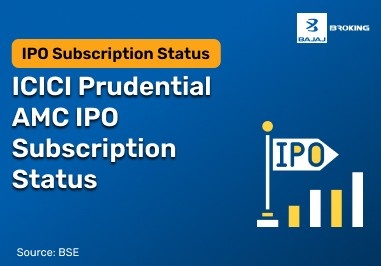If you understand the psychology of the traders collectively participating in the market, you can anticipate future trends more effectively. In this article, we’ll take a closer look at what trading psychology is and
Introduction to Trading Psychology
When you participate in the financial markets, your decisions are not just shaped by charts or data—they are also driven by your thoughts, emotions, and internal reactions. Trading psychology refers to the mindset and behavioural patterns that influence how you engage with risk, rewards, and uncertainty. It plays a central role in shaping the outcomes of your trades. You might often notice that even with a clear strategy in place, decisions can be altered by emotions like fear or greed. These emotional shifts can lead to impulsive actions, hesitation, or overconfidence. By becoming more aware of your mental responses, you can build better discipline and improve consistency over time. Trading psychology does not focus on predicting the market—it focuses on helping you manage yourself within the market environment. If you want to develop long-term steadiness, understanding your psychological triggers becomes as important as knowing the tools or trends.
Psychology is the study of the mental state and emotional aspects of an individual. Trading psychology is, by extension, the study of understanding a trader’s mindset. It involves getting to know the inherent biases and emotions that drive your own trading decisions as well as the decisions of other investors in the market.
This is an interesting aspect to decode because, at first glance, trading comes across as a highly quantitative and objective activity. However, a closer look will show you that trading is also extremely qualitative and subjective — because it is influenced by the general market sentiment.
Why is it Important to Understand Trading Psychology?
Trading psychology directly affects your investment decisions. If the investor sentiment is bullish on a particular stock, it could drive the price upward. However, a bearish sentiment may be a precursor to falling stock prices.
Similarly, if the quarterly results of a company are due to be released, and if the investors have a positive outlook regarding the financials, they may increase the buying pressure. On the other hand, if the prevailing market sentiment is one of fear or panic about the results, the selling pressure may rise instead.
Additionally, apart from the general market sentiment, your own psychology and mindset also influence your trading decisions significantly. If you are afraid of falling stock prices, you may end up panic selling. On the other hand, if you are irrationally optimistic about a specific stock, you may take a long position in the company even if it is not fundamentally strong.
By understanding your individual trading psychology as well as the collective psychology of traders in the market, you can predict these patterns and prevent yourself from making impulsive or emotional decisions.
What is Behavioral Finance?
Behavioral finance is a field within economics that studies how psychological influences and biases affect the financial decisions of investors and traders. Unlike traditional finance, which assumes that individuals act rationally in their economic decisions, behavioral finance recognizes that human behavior often deviates from rationality. This field explores how factors like emotions, cognitive biases, and social influences lead to irrational financial behaviors, impacting market trends and individual trading psychology. By examining how these biases manifest, behavioral finance offers insights into the patterns behind price movements and investor behavior, emphasizing the psychology of trading as a pivotal factor in market dynamics.
In trading and psychology, understanding behavioral finance helps investors make more informed decisions by identifying biases such as overconfidence, loss aversion, and herd mentality. For instance, psychology and trading often intertwine when traders follow crowd behavior without adequate research, leading to collective market booms or crashes. By recognizing the impact of these biases, investors can cultivate a disciplined approach to manage emotions and mitigate the pitfalls of irrational decision-making. Consequently, behavioral finance not only supports improved personal trading strategies but also underscores the importance of emotional discipline in trading psychology.
Behavioural biases in investing
Your investment decisions are rarely as objective as they seem. Psychological patterns often guide how you respond to gains, losses, and information. These patterns are called behavioural biases, and they can influence your financial outcomes without you even realising it. Here are some key biases to look out for:
Confirmation bias
You might tend to seek out information that supports your existing beliefs while ignoring evidence that contradicts them. This can lead to one-sided decision-making and reduced adaptability in dynamic markets.
Loss aversion
You may feel the pain of losing money more intensely than the satisfaction of making gains. This often results in holding onto loss-making assets longer than necessary, hoping to avoid a realised loss.
Overconfidence bias
If you overestimate your knowledge or forecasting ability, you might take bigger risks than planned. This bias can distort risk perception and reduce rational judgement.
Anchoring bias
You could unknowingly rely too much on a specific number—like an earlier share price—to make decisions, even if market conditions have changed since.
Herd mentality
When many people make the same move in the market, you might feel inclined to follow, assuming they know something you do not. This behaviour can lead to crowd-driven trends and short-term volatility.
What Are the Main Categories of Behavioral Biases That Traders Face?
Now that you know what psychology is in trading, you can better appreciate the common biases that trades are prone to. Check out these biases and what you can do to manage them.
Availability bias in trading psychology is the practice of making trading decisions based on certain information simply because it is easily available. Needless to say, doing this will lead to uninformed decision-making.
Managing Availability Bias
The only way to avoid this bias is to take the time to research the stock you wish to invest in and look beyond easily available information.
Anchoring bias occurs when you tend to rely too heavily on a particular bit of information over others. In other words, you ‘anchor’ onto one detail. This will prevent you from factoring in other material information when you make trading decisions.
Managing Anchoring Bias
You can avoid anchoring bias by actively conducting your own research and looking past the information you tend to prioritise.
Confirmation bias occurs when you tend to value information that confirms your pre-existing beliefs rather than weight data objectively. This will inevitably lead to biases in decision-making. For instance, you may ignore negative data about a stock because you believe the company is strong.
Managing Confirmation Bias
To overcome confirmation bias, you need to evaluate information even if it conflicts with your preconceived notions.
Hindsight bias in trading psychology is the tendency of traders to believe that they knew something all along. However, this is not always the case, because some things seem more obvious in the future after new information comes to light.
To avoid hindsight bias and the false sense of confidence it gives you, ensure that you keep a log of the factors that drive your trading decisions. This way, you know exactly what information you had and used.
If you are prone to recency bias, you will tend to value recent information over older data. While this may work in your favour sometimes, it may be a costly mistake at other times.
To overcome recency bias, you need to consciously strive to gather older information and assess if it is material for your trading decisions.
What Are Some of the Common Pitfalls of Traders Neglecting Trading Psychology?
Neglecting trading psychology can lead to several pitfalls that can hinder a trader’s success. Here are some of the most common issues
Emotional Trading Decisions
Without understanding trading psychology, traders often let emotions like fear and greed dictate their trades. This can lead to impulsive decisions, chasing losses, or holding onto losing positions longer than necessary.
Lack of Discipline
Traders who ignore the psychology of trading may struggle with maintaining discipline. This could manifest as deviating from their trading plan, overtrading, or ignoring risk management rules.
Overconfidence and Impulsivity
When psychology and trading aren't balanced, some traders may become overconfident after a few successful trades, leading to impulsive moves without sufficient analysis.
Fear of Missing Out (FOMO)
FOMO is a significant psychological trap for many traders. Those who don't consider trading and psychology often fall into the habit of jumping into trades without proper analysis, driven by the fear of missing potential profits.
Inability to Accept Losses
Effective trading psychology involves recognizing that losses are a part of trading. Traders who avoid this aspect may refuse to cut losses early, hoping that the market will turn in their favour, which can exacerbate losses.
How Can Traders Overcome Biases to Avoid Pitfalls?
Overcoming biases in trading psychology is essential to avoid common pitfalls and make rational decisions. Here are some effective strategies
Recognize and Address Confirmation Bias
Traders often look for information that confirms their beliefs. To counter this, consider analysing data from multiple sources and perspectives, ensuring a balanced view of the market.
Establish a Trading Plan
Having a structured plan helps to reduce emotional decisions. A trading plan, informed by psychology and trading principles, can serve as a guide to avoid impulsive actions.
Implement Stop-Loss Orders
Emotional biases can cloud judgement, leading traders to hold onto losing positions. Using stop-loss orders can enforce discipline and reduce losses, benefiting from the psychology of trading principles.
Review and Reflect Regularly
Periodic self-reflection can help identify recurring biases. By understanding trading and psychology, traders can adjust their strategies to improve decision-making over time.
- Use Journaling to Track Emotional Triggers
Maintaining a trading journal helps track emotional triggers and recurring patterns. Recognizing these can assist in maintaining a rational approach, aligned with sound trading psychology practices.
Conclusion
This concludes the details of what trading psychology is and why it is important. To become a successful trader, it is essential to be aware of your own trading psychology, emotions and biases too. This will help you make objective trading decisions that are not governed by your impulses and emotions. What’s more, by understanding the overall trading psychology and sentiment associated with the market, you can get more clarity on the prevailing and potential price movements.














